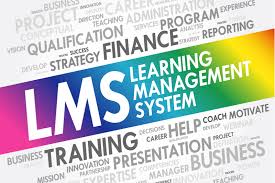Microsoft 365 and SharePoint have become integral tools for businesses worldwide, empowering collaboration, communication, and content management. As technology progresses, it’s important to consider the future of these platforms and the potential opportunities they may bring.
This article will discuss the predictions and opportunities for both Microsoft 365 and SharePoint, focusing on their key aspects and potential advancements.
Microsoft 365: Predictions and Opportunities
1. Intelligent Workplaces
Microsoft 365 embraces the concept of intelligent workplaces, where advanced technologies like (AI) and (ML) play a central role. Predictive analytics, automation, and personalized experiences will be integrated into Microsoft 365 applications, enhancing productivity and efficiency.
Example: Microsoft 365 may leverage AI capabilities to automatically prioritize emails, schedule meetings based on user preferences, and provide intelligent insights to optimize daily workflows.
2. Enhanced Collaboration
Collaboration is at the core of Microsoft 365, and its future will focus on further empowering teams to work seamlessly across different devices and locations. Real-time co-authoring, interactive virtual meetings, and integration with external collaboration platforms will be enhanced to foster efficient teamwork.
Example: Microsoft 365 will soon be able to use virtual reality (VR) or augmented reality (AR) technology. This would allow users to collaborate in virtual environments, making collaborative experiences more engaging and productive.
3. Data-driven Insights
Data is a valuable asset, and Microsoft 365 will continue to leverage it to provide actionable insights to users. Advanced analytics and data visualization tools will empower organizations to make informed decisions and drive business growth.
Example: Microsoft 365 can use machine learning algorithms to analyze user data and offer personalized suggestions. This could include recommending relevant documents or giving insights on user behavior patterns.
4. Enhanced Security and Compliance
Security and compliance will remain critical in an increasingly interconnected digital landscape. Microsoft 365 will strengthen its security features, including multi-factor authentication, encryption, and advanced threat protection, to safeguard sensitive data and ensure regulatory compliance.
Example: Microsoft 365 might introduce advanced biometric authentication methods, such as facial or voice recognition, to enhance security measures and prevent unauthorized access.
SharePoint: Predictions and Opportunities
1. Intelligent Content Management
SharePoint customization is evolving into an innovative content management system, leveraging AI and ML to automate content organization, categorization, and metadata extraction. It will facilitate efficient content discovery and retrieval, simplifying organizational information management.
Example: SharePoint may utilize image recognition algorithms to automatically tag images uploaded to the platform, making searching and classifying visual content easier.
2. Modernized Collaboration Portals
SharePoint’s future will see the development of modernized collaboration portals that are intuitive, visually appealing, and highly customizable. Organizations can create engaging and tailored collaboration spaces for teams, departments, or projects, driving knowledge sharing and collaboration.
Example: SharePoint might introduce drag-and-drop interfaces, pre-built templates, and widgets to allow users to easily customize their collaboration portals according to their specific requirements and preferences.
3. Seamless Integration with Microsoft 365
Microsoft 365 and SharePoint will continue strengthening their integration, providing a unified and seamless user experience. SharePoint will serve as a central hub for content management, while Microsoft 365 applications will seamlessly interact with SharePoint for document storage, sharing, and collaboration.
Example: SharePoint could integrate with Microsoft Teams, enabling users to access and collaborate on SharePoint documents directly within the Teams interface, streamlining communication and collaboration workflows.
4. Hybrid and Cloud Solutions
In the future, SharePoint will provide organizations with the option to choose on-premises, cloud-based, or hybrid deployments based on their needs. This hybrid and cloud solution offers flexibility to organizations.
Example: SharePoint’s hybrid deployment allows for secure on-premises storage and cloud collaboration.
5. Streamlined Business Processes
SharePoint will continue to evolve as a platform for automating and streamlining business processes. Integration with Microsoft Power Automate and Power Apps will enable organizations to create custom workflows and applications without extensive coding knowledge, improving operational efficiency.
Example: SharePoint could offer pre-built templates and connectors that allow users to create these according to their business needs:
- automated approval processes,
- document review workflows
- task management systems
Conclusion
The future of Microsoft 365 and SharePoint holds significant promise. Companies rely more on these platforms for productivity and content management. The predicted opportunities can help organizations stay ahead in a rapidly changing digital world. By leveraging the potential of Microsoft 365 and SharePoint, businesses can foster innovation, empower teams, and drive success in the future.






